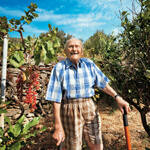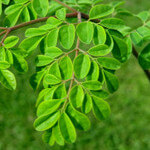 In 2008, an American writer and explorer named Dan Buettner published a book entitled The Blue Zones: Lessons for Living Longer From the People Who’ve Lived the Longest. This book, which was an extension of a report Buettner wrote for National Geographic in 2005 about longevity, contained information about five regions in the world in which people lived for an unusually long time (often over 100 years, as proven by verifiable birth certificates). These five regions, which Buettner named the “Blue Zones,” are:
In 2008, an American writer and explorer named Dan Buettner published a book entitled The Blue Zones: Lessons for Living Longer From the People Who’ve Lived the Longest. This book, which was an extension of a report Buettner wrote for National Geographic in 2005 about longevity, contained information about five regions in the world in which people lived for an unusually long time (often over 100 years, as proven by verifiable birth certificates). These five regions, which Buettner named the “Blue Zones,” are:
- The Barbagia region of Sardinia, Italy
- The tropical islands of Okinawa in Japan
- Loma Linda, California (home of the Seventh Day Adventists religious group)
- The small island of Ikaria in Greece
- Costa Rica’s isolated Nicoya Peninsula
Understanding that only 20 percent of how long a person lives is determined by genetics, Buettner and his research team began to monitor the diets and lifestyles of these Blue Zone centenarians in the hope of discovering the secrets of their longevity. His book is, in essence, an exploration of the recurring trends he found while interviewing and living among them. These trends were:
Frequent, Natural Exercise
The most significant lifestyle factor shared by the centenarians of the Blue Zones, Buettner reported, was the frequency and gentleness of their exercise. These people, who often tended to their own gardens and farms, routinely exercised for more than five hours per day. However, their exercise was always based on natural movements such as moderate walking, gentle lifting and tilling the soil. Comparatively extreme exercise, such as weight lifting and marathon running, was non-existent.
Simple, Plant-Based Diets
All of the centenarians embraced a simple diet that was high in fruits and vegetables (especially legumes) and low in fat, meat and refined sugar. They favored goat’s milk to cow’s milk, drank alcohol moderately (one or two glasses of wine per day with food was common) and only ate rich foods like meat and cheese around five times per month, if at all. Many of the plants they consumed were grown themselves, and very few of them ate fruits or vegetables that were out of season.
Here is a more specific list of the foods favored by the centenarians of each Blue Zone:
- Sardinia – Bread, vegetables, small amounts of wine and goats’ cheese, very little meat
- Okinawa – Sweet potatoes, fermented soy products, rice, vegetables
- Loma Linda – Fresh fruit, oatmeal, salads, vegetarian foods
- Ikaria – Vegetables, wine, herbal teas, small amounts of meat
- Nicoyans – Corn tortillas, beans, fruit, some animal products (mostly chicken and eggs)
Significantly, a large number of the centenarians also followed the “80 percent rule.” That is, they consciously decided to stop eating when their stomachs were around 80 percent full, which prevented them from overeating.
A Sense of Belonging
Of the 268 centenarians interviewed by Buettner, 263 of them belonged to a faith-based community (the denomination didn’t seem to matter) and regularly conversed with other believers. Additionally, most of them enjoyed the company of a mutually-supportive network of friends and family members; none of them lived alone in nursing homes. All of these factors contributed towards an enormous sense of belonging, which appeared to boost their psychological health.
Frequent Exposure to Sunshine
All of the Blue Zones are sunny, and all of the centenarians Buettner interviewed exposed themselves to sunshine regularly due to their outdoor lifestyles. Consequently, they received large amounts of natural vitamin D which, as studies have shown, is linked to improved mood and sleep, improved bone and eye health, and much more. Moreover, as Buettner and other researchers have noted, warm climates seem to promote a more relaxed “work to live” attitude to life.
“To make it to age 100, you have to have won the genetic lottery,” Buettner concludes. “But most of us have the capacity to make it well into our early 90s and largely without chronic disease. As the [centenarians] demonstrate, the average person’s life expectancy could increase by 10-12 years by adopting a Blue Zones lifestyle.”






